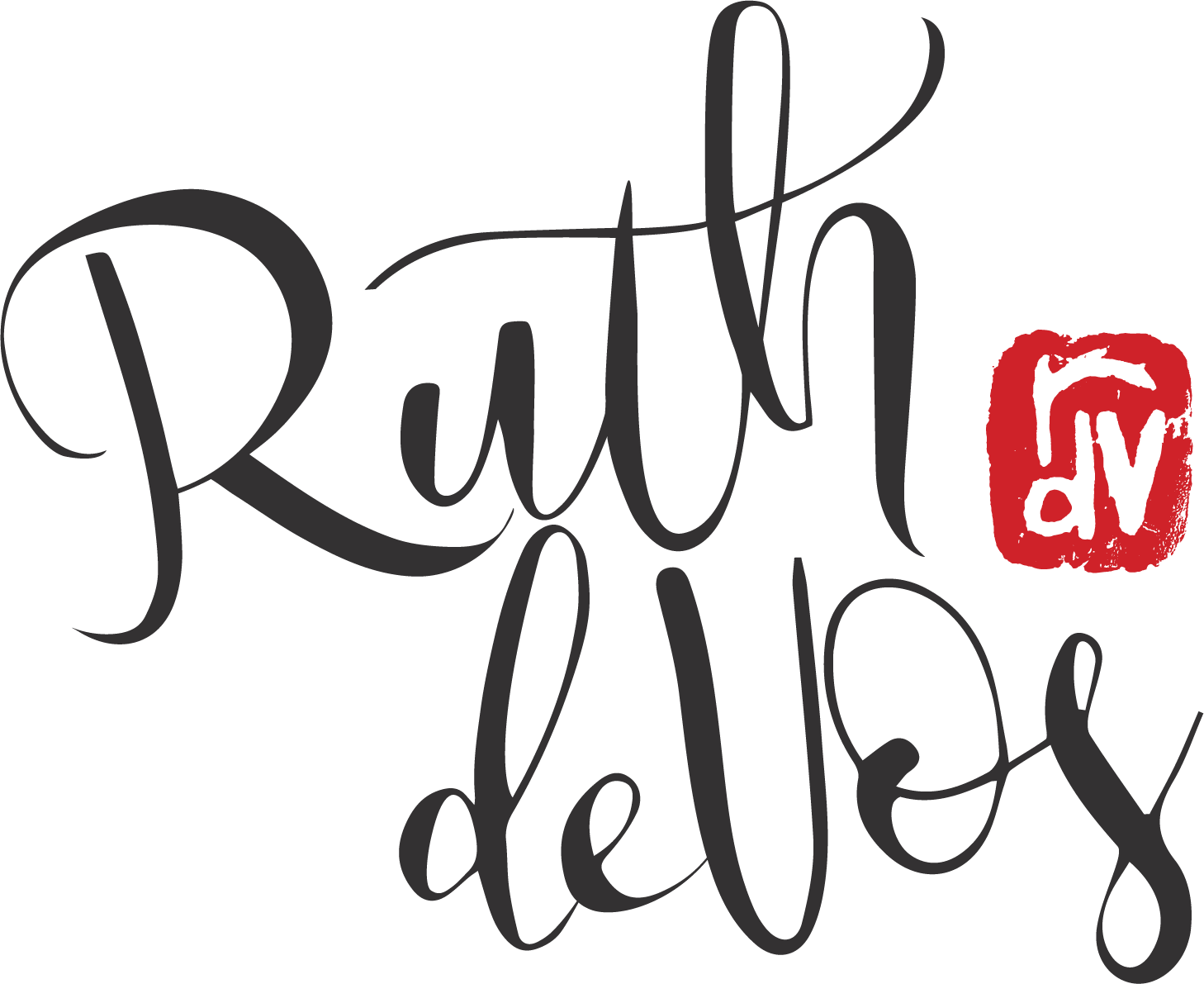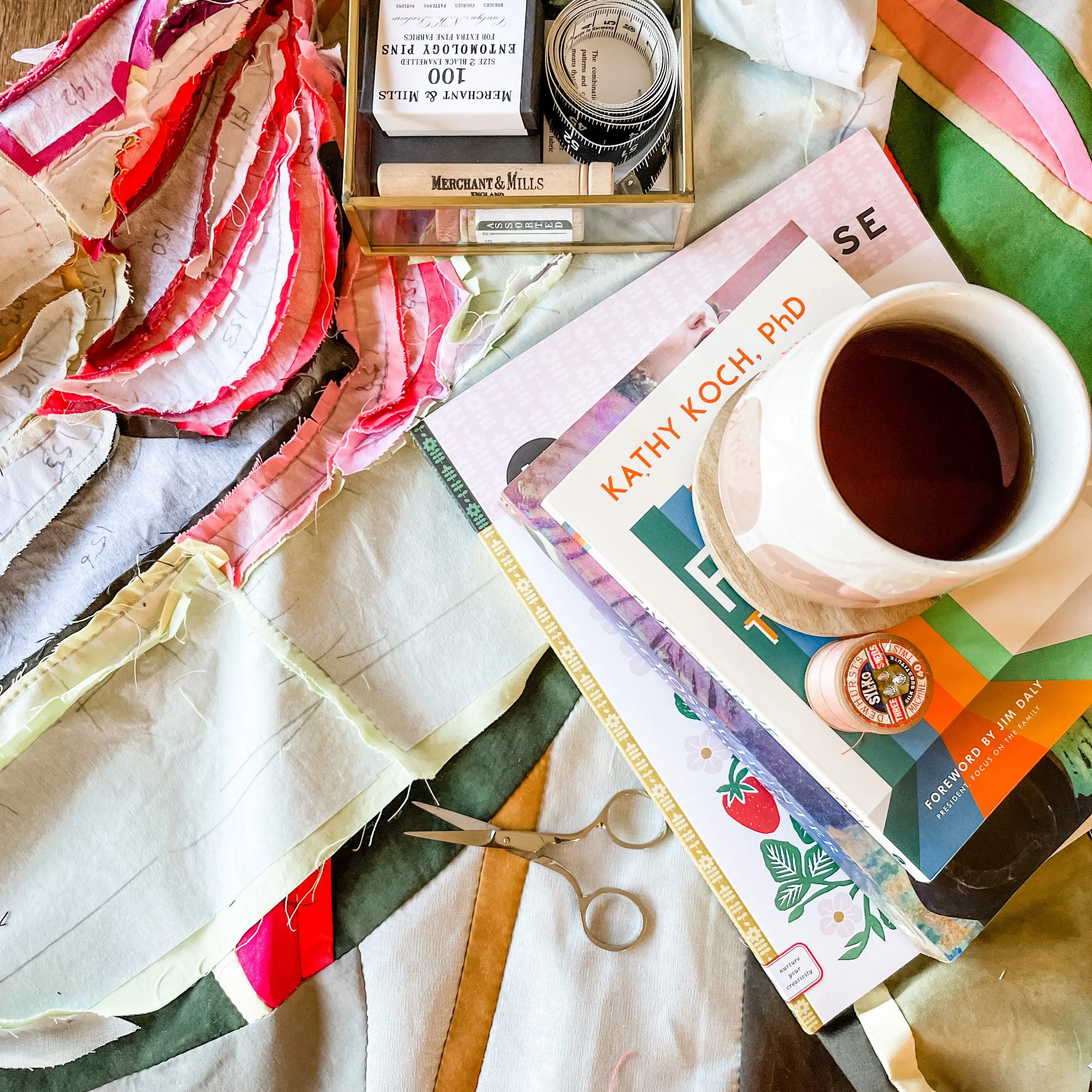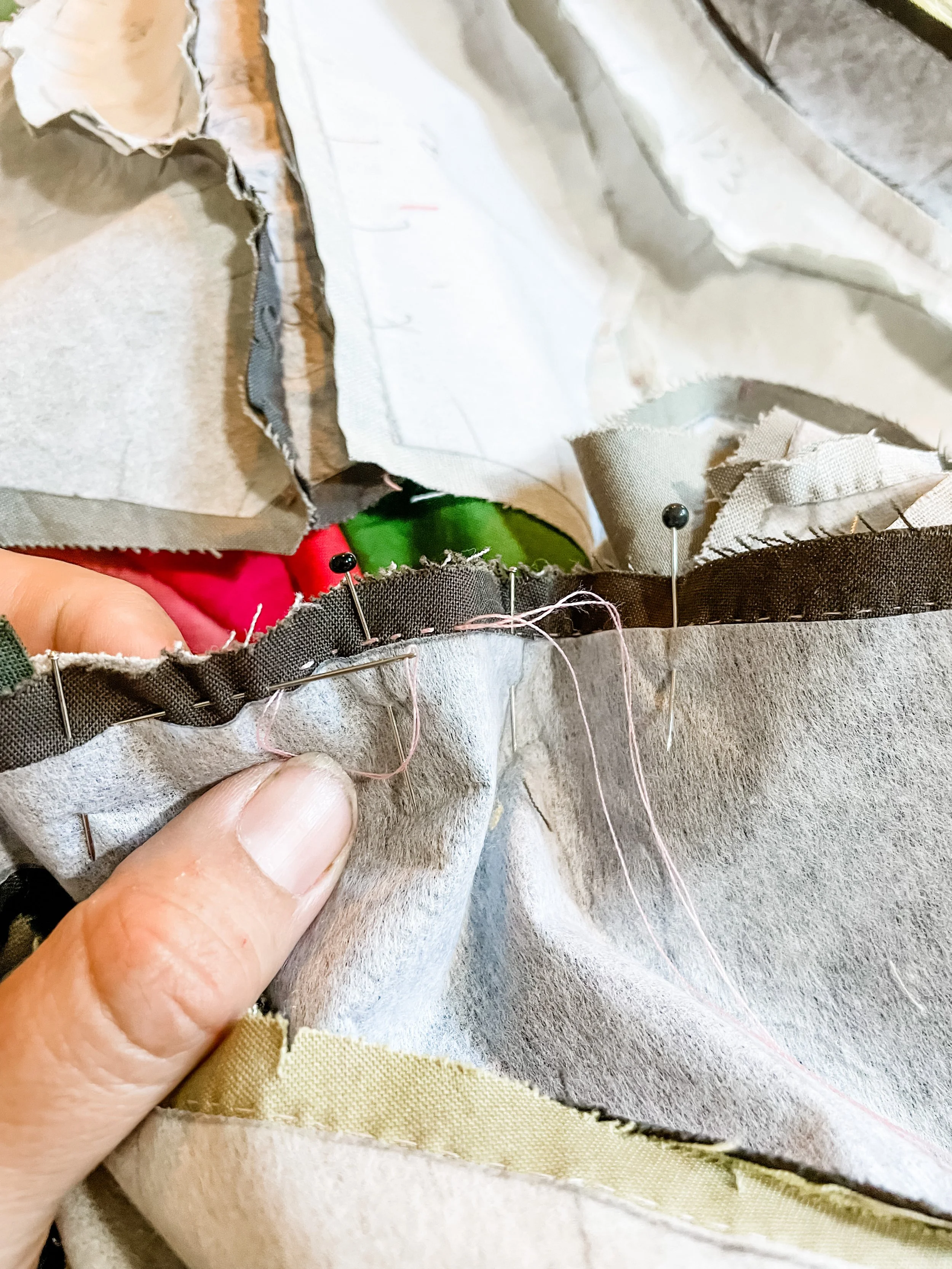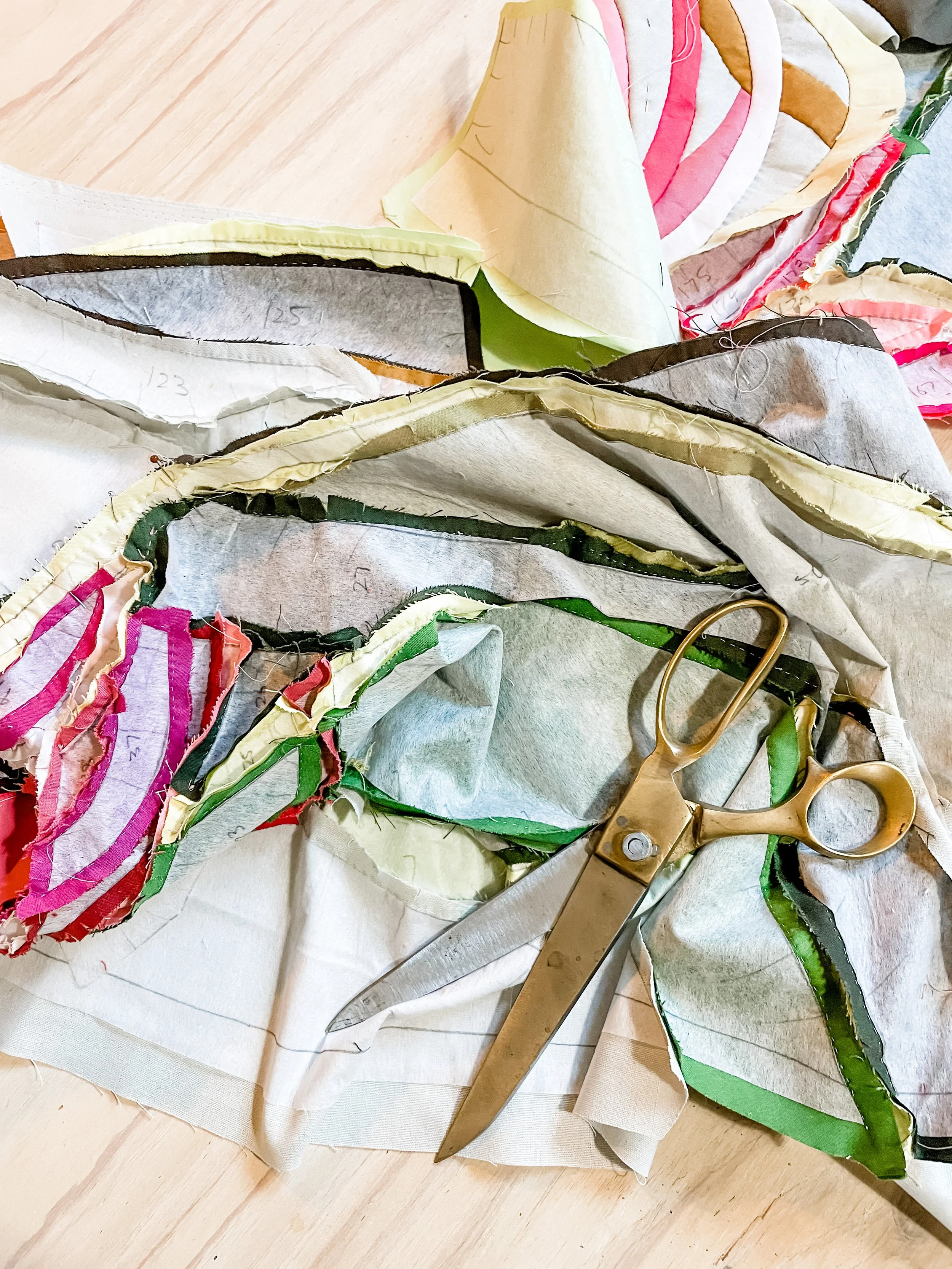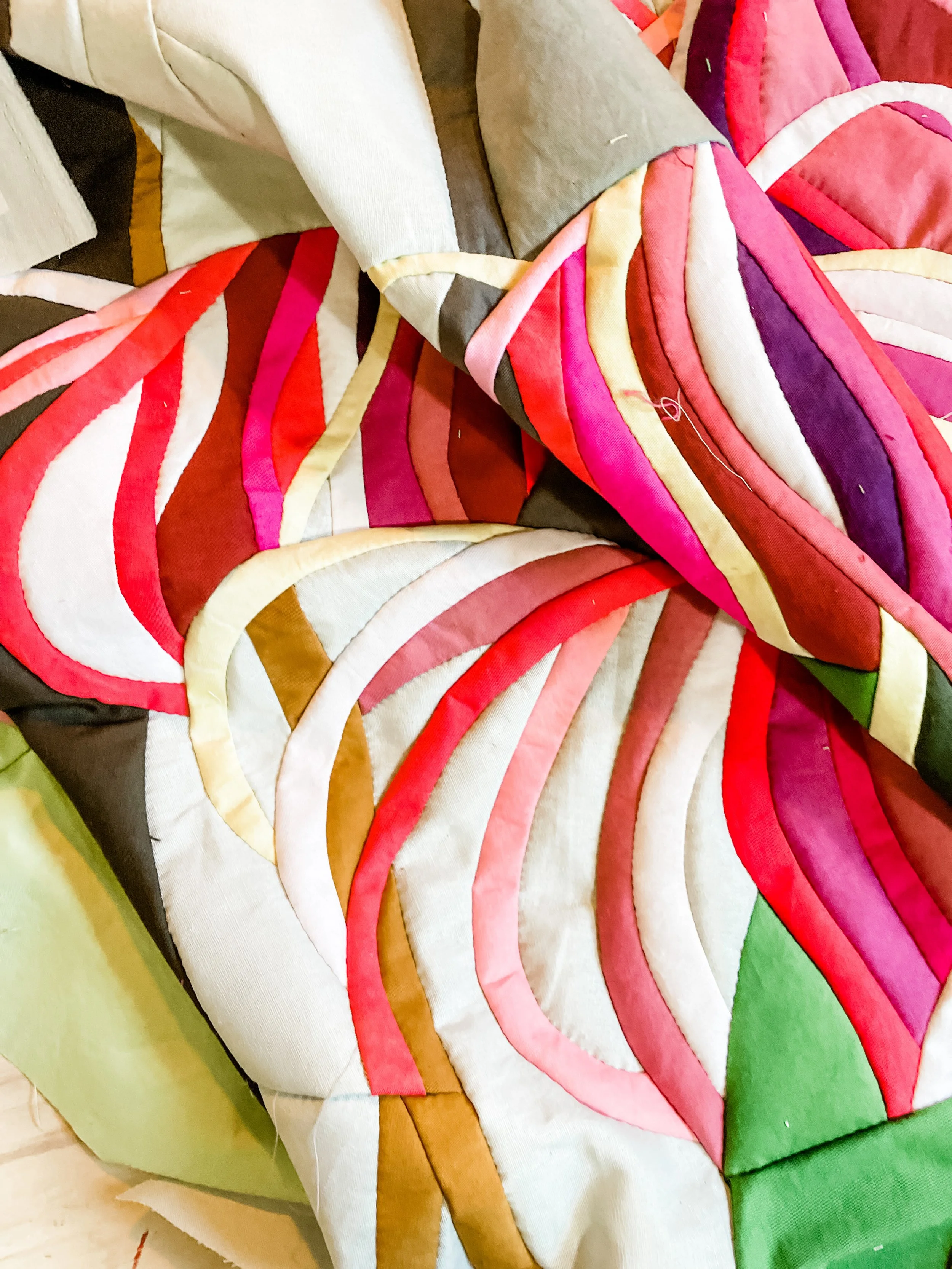Hand-piecework
If you’ve been around for a while, you may have noticed a gradual shift towards more and more handstitching in my textile work. I’ve learned to love and appreciate the slower, more mindful process of pulling a needle and thread through fabric to created beautifully stitched treasures. In recent years, I switched to hand-piecing trickier sections of my art quilts, such as children’s faces, as I found that I ended up with a nicer result when I hand stitch. Since then, I’ve been doing more and more piecing by hand, because I’ve realised that the process is good for me!
I think there are a couple of reasons for this. The first is that I am more in control with the hand-stitching. I’m able to adjust and manipulate the fabric as I go, to ensure that I have an accurate seam. The second is that, due to the running stitch that I use, I am able to ease the fabric pieces into place as needed. The hand-stitched seams are a bit more forgiving than the machine-stitched seams (hello, tension - that T-word everyone dreads when it comes to sewing machines!)
I find that I am more relaxed when I’m hand-stitching. It becomes more about enjoying the process of stitching, and attaching pieces of fabric together, rather than a race to see the final result. As someone in a constant bid to slow down and relax, this is a good thing :)
When I hand-piece, I use a very fine running stitch (a very basic up-and-down stitch). Basically, I just make the stitches as small as I can reasonable manage for the fabric that I am working with. On longer seams, I’ll do a little back stitch every so often, to secure the thread, but generally, for wall hangings and wall art I consider a fine running stitch to be sufficient. For a quilt that will be washed a lot, you may want a more secure seam. Be sure to secure the end of your seam to make sure that it doesn’t unravel. One or two stitches is enough for this kind of work, as the ends of the seams all end up being captured in new seams or in the binding of the quilt.
Oh, and as my mum always said, if you cut your thread too long, you will end up with big knots. Well, she had a Dutch saying for that, so this is a rough translation. I heard that one a lot, as I always took (take…) the approach that a longer thread might save me time. One big tip here that took me way too many years to learn, is to run your piece of thread between thumb and finger a few times before threading your needle. This takes some of the ‘twist’ out of it so that it doesn’t tangle up on itself quite so easily.
In case you missed it, I wrote an earlier blog post about how I manage a larger hand-pieced project. You can find that here.
